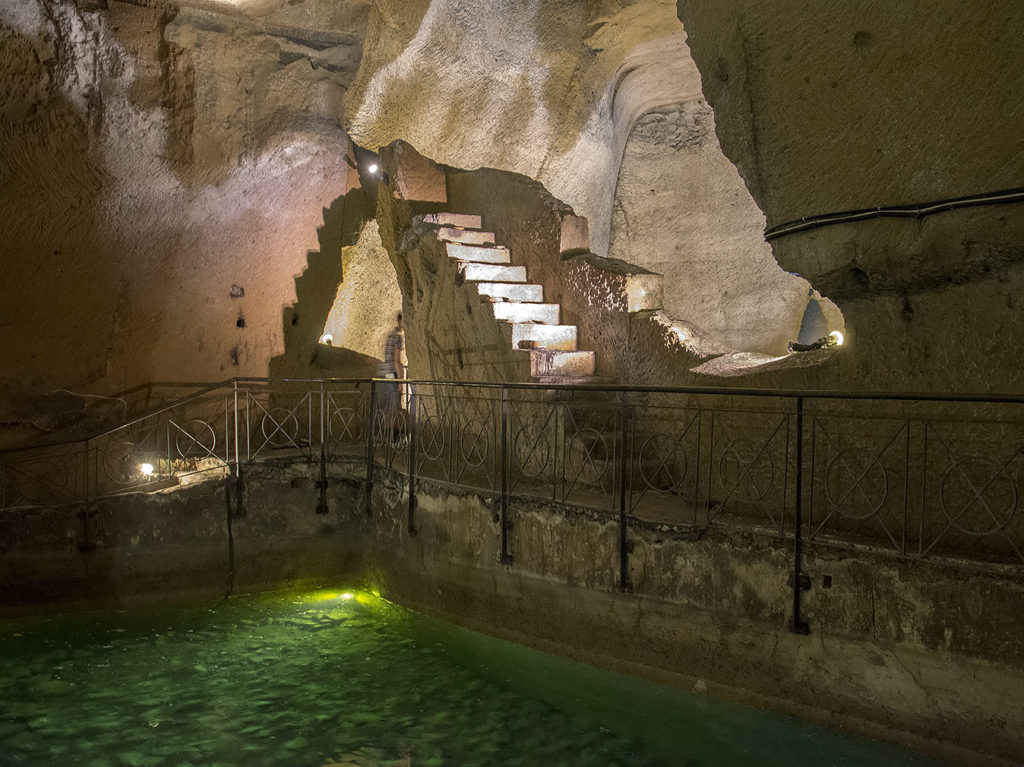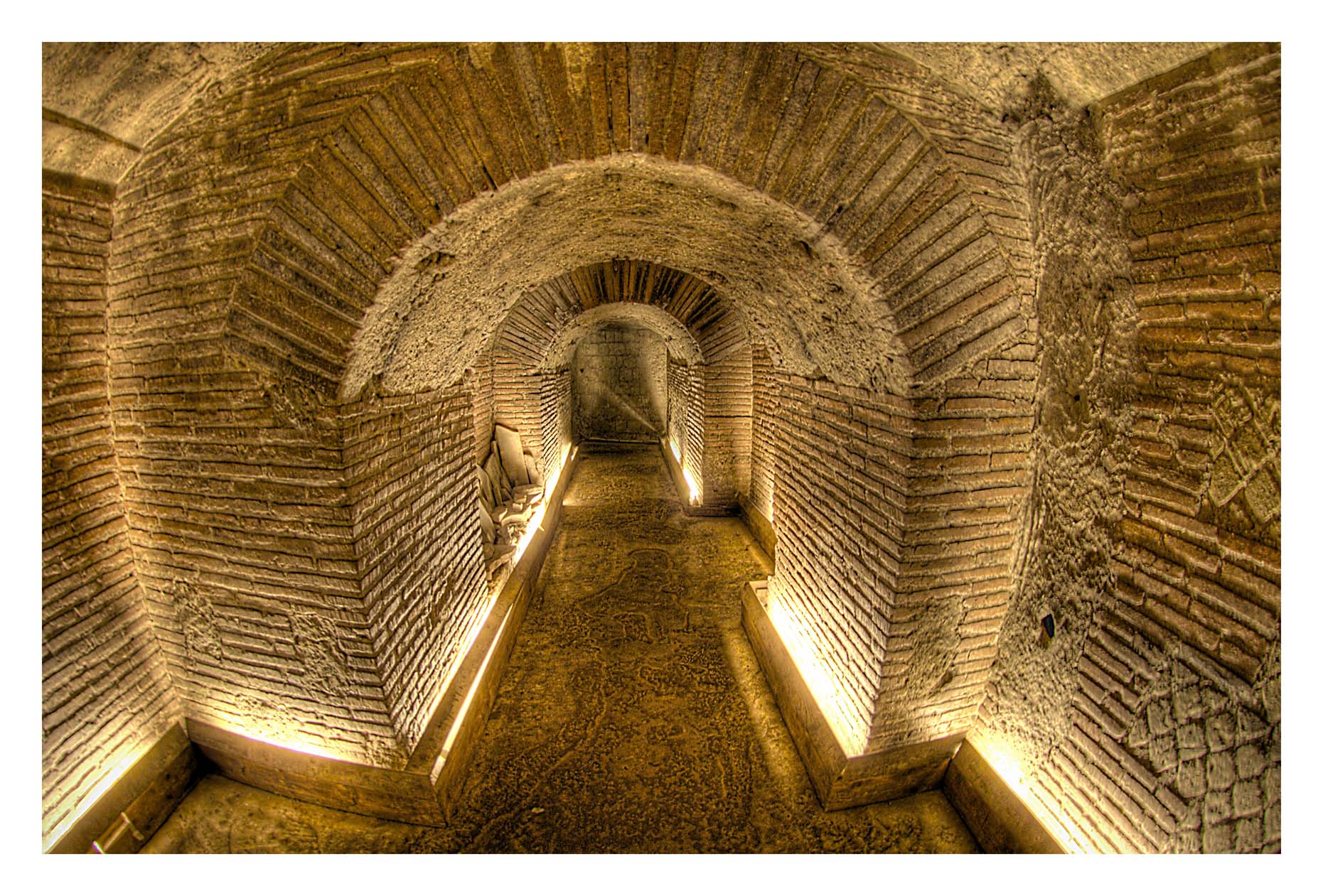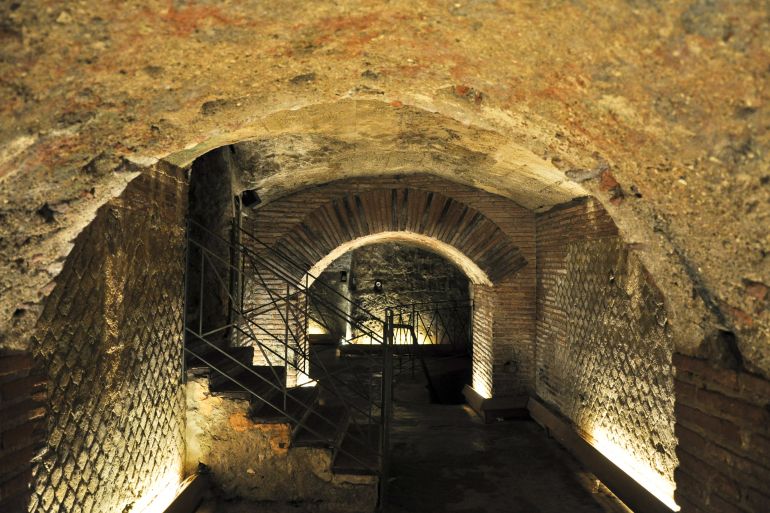NAPOLI SOTTERRANEA
For over 30 years, Napoli Sotterranea has offered excursions to the most fascinating and evocative places in the belly of the city. The members of the Association are committed to the recovery and enhancement of the subsoil for public use. Underground Naples has represented a fundamental starting point for other realities born in Italy and Europe thanks to the competence and collaboration of the Association.
Taking part in the excursion means making a journey through history 2400 years long, from the Greek era to the modern one, at a depth of 40 meters between tunnels and cisterns. During the excursion, in addition to admiring the remains of the ancient Greco-Roman aqueduct and the air-raid shelters of the Second World War, you will visit the War Museum, the Hypogeal Gardens (www.ortipogei.it), the Seismic Station “Arianna” and much more. Finally, it will be possible to visit the remains of the ancient Greek-Roman theater for free, accessible from a private property.
The history of the Neapolitan subsoil:
The first artifacts of underground excavations date back to around 5,000 years ago, almost at the end of the prehistoric era. Subsequently, in the III century BC, the Greeks opened the first underground quarries to obtain the blocks of tuff needed to build the walls and temples of their Neapolis and dug in numerous environments to create a series of funeral hypogea. The imposing development of the underground network began in Roman times: the Romans in fact in the Augustan period endowed the city with road tunnels and above all a complex network of aqueducts, fed by underground conduits coming from the sources of the Serino, 70 km away from the center of Naples. Other branches of the aqueduct of the Augustan age reached as far as Miseno, to feed the Piscina Mirabilis, which was the water reserve of the Roman fleet. Wide that little that allowed the passage of a man, the aqueduct tunnels branched out in all directions, with the aim of feeding fountains and houses located in different areas of the upper city. At times, on the walls, there are still traces of the hydraulic plaster, used by ancient engineers to waterproof the tunnels. At the beginning of the 16th century, the old aqueduct and the many rainwater cisterns could no longer satisfy the need for water in the city, which had spread like wildfire and it was thus that the wealthy Neapolitan nobleman Cesare Carmignano built a new aqueduct. It was only at the beginning of the twentieth century that underground excavation for water supply stopped and a network of tunnels and cisterns of over 2,000,000 m² spread throughout the city. The basements were then used during the Second World War as air raid shelters to protect themselves from the disastrous bombings that hit the city. The cavities were illuminated and arranged to accommodate dozens of people who hurried down the stairs that went down to the depths of the siren. Remnants of furnishings, graffiti and various objects in excellent condition still bear witness to the great fear of bombing and the numerous periods of the day lived in the refuges, bringing to light an important and at the same time tragic slice of life in the city’s history.
Website
www.napolisotterranea.org










